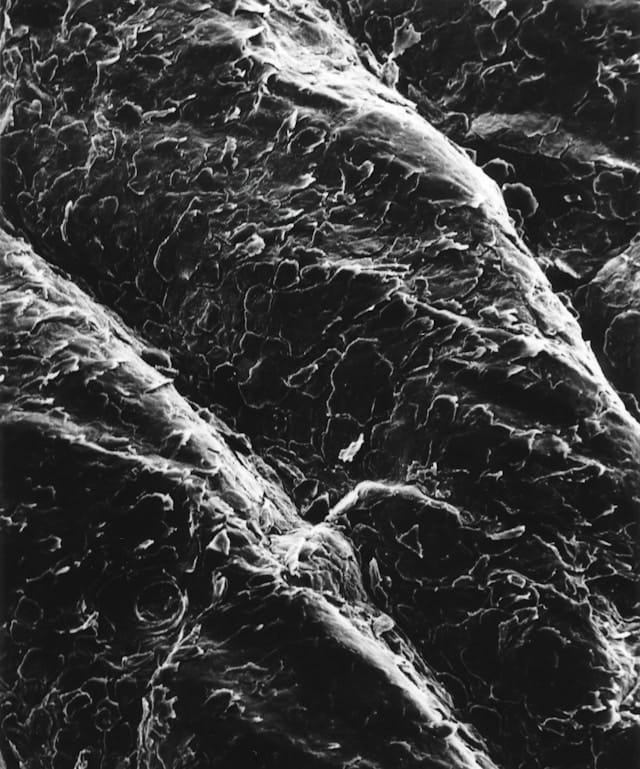When studying cellular biology, one of the fundamental concepts to grasp is the difference between meiosis and mitosis. Both processes are essential for cell division and play crucial roles in the growth, reproduction, and maintenance of organisms. While they may appear similar at first glance, they serve distinct purposes and involve different mechanisms that are vital to understanding life itself.
Mitosis is the process by which a single somatic cell divides to produce two genetically identical daughter cells. This type of cell division is crucial for growth, tissue repair, and asexual reproduction in multicellular organisms. The phases of mitosis—prophase, metaphase, anaphase, and telophase—are well-defined and ensure the equal distribution of genetic material to the daughter cells.
In contrast, meiosis is a specialized form of cell division that occurs only in germ cells and is essential for sexual reproduction. Meiosis reduces the chromosome number by half, resulting in four genetically diverse gametes (sperm and egg cells). This process consists of two consecutive divisions, meiosis I and meiosis II, each comprising stages similar to mitosis, but with additional complexities that promote genetic variation through mechanisms like crossing over and independent assortment.
Understanding the difference between meiosis and mitosis is crucial not only for students of biology but also for professionals in fields such as medicine, genetics, and agriculture. These processes underpin everything from growth and development to the continuation of species. By dissecting the unique characteristics, functions, and outcomes of mitosis and meiosis, we can better appreciate how life perpetuates itself and adapts over generations.
What is Mitosis?
Mitosis is the process by which a single cell divides to produce two identical daughter cells, each with the same number of chromosomes as the parent cell. This type of cell division is essential for growth, repair, and asexual reproduction in multicellular organisms. Mitosis can be divided into several phases: prophase, metaphase, anaphase, and telophase, culminating in cytokinesis. Each phase has specific events and characteristics, leading to the equal distribution of genetic material.
What is Meiosis?
On the other hand, meiosis is a specialized form of cell division that reduces the chromosome number by half, resulting in four non-identical daughter cells. This process is critical for sexual reproduction, as it produces gametes (sperm and egg cells) that have only one set of chromosomes. Meiosis consists of two consecutive divisions: meiosis I and meiosis II. Each division has its own stages, similar to mitosis but with key differences that ensure genetic variation through processes such as crossing over and independent assortment.
The Key Difference Between Meiosis and Mitosis
The difference between meiosis and mitosis primarily lies in their purpose and the outcome of each process. While mitosis results in two genetically identical cells, meiosis produces four genetically diverse cells. This genetic variation is crucial for evolution and adaptation, making meiosis a vital component of biological diversity.
Comparison of Mitosis and Meiosis
To further illustrate the difference between meiosis and mitosis, let’s break down the main distinctions and similarities:
- Purpose: Mitosis is for growth and repair, while meiosis is for sexual reproduction.
- Number of Cells Produced: Mitosis produces two cells, whereas meiosis results in four.
- Genetic Composition: Mitosis produces identical cells, while meiosis produces genetically varied cells.
- Chromosome Number: Mitosis maintains the same chromosome number, whereas meiosis halves it.
- Phases: Both processes go through stages, but meiosis includes two rounds of division.
Detailed Differences Between Mitosis and Meiosis
- Cell Cycle: Mitosis occurs in somatic (body) cells, while meiosis occurs in germ (reproductive) cells.
- Chromosome Alignment: In mitosis, chromosomes align individually; in meiosis, homologous chromosomes pair up.
- Crossing Over: Occurs in meiosis but not in mitosis, contributing to genetic diversity.
- Duration: Mitosis is usually quicker than meiosis, which takes longer due to the complexity of pairing and recombination.
- Fate of Daughter Cells: Mitosis daughter cells can divide again, but meiosis daughter cells do not typically undergo further division.
Similarities Between Mitosis and Meiosis
Despite their differences, both processes share several similarities:
- Stages: Both undergo similar stages of prophase, metaphase, anaphase, and telophase.
- DNA Replication: Both processes involve DNA replication during the S phase of interphase before division occurs.
- Cytokinesis: Both involve the division of cytoplasm to produce daughter cells.
Visual Representation of the Difference Between Meiosis and Mitosis
A difference between meiosis and mitosis table can help visualize the contrasting aspects of these two processes. Here’s a simplified version:
| Feature | Mitosis | Meiosis |
|---|---|---|
| Purpose | Growth and repair | Sexual reproduction |
| Number of Divisions | One | Two |
| Number of Daughter Cells | Two | Four |
| Genetic Variation | No | Yes |
| Chromosome Number | Maintained | Halved |
| Occurrence | Somatic cells | Germ cells |
Importance of Understanding the Difference
Understanding the difference between meiosis and mitosis is crucial for various scientific fields, including genetics, medicine, and agriculture. For instance, insights into meiosis can enhance our understanding of genetic disorders and fertility issues, while knowledge of mitosis is vital for cancer research, as uncontrolled mitotic division leads to tumor formation.
Real-World Applications of Mitosis and Meiosis
Both mitosis and meiosis play crucial roles in the maintenance and propagation of life, influencing a variety of biological processes and applications that are vital to health, agriculture, and biodiversity. Understanding the difference between meiosis and mitosis is essential for appreciating their respective functions in these real-world applications.
Mitosis: Healing, Growth, and Repair
Mitosis is fundamental in several real-world applications, particularly in healing wounds, growing tissues, and replacing dead or damaged cells. Recognizing the difference between meiosis and mitosis helps clarify why mitosis is critical for these processes.
Wound Healing: When a wound occurs, the body initiates a complex healing process that involves the rapid division of skin cells through mitosis. This process enables the replacement of damaged tissues, allowing for quicker recovery. For instance, fibroblasts (a type of connective tissue cell) proliferate to close wounds and form scar tissue, while keratinocytes migrate to the wound site, dividing rapidly to restore the skin’s barrier function. The distinction between mitosis and meiosis is important here, as mitosis directly contributes to tissue repair.
Tissue Growth: During development, organisms rely on mitosis to increase cell numbers, enabling growth from a single fertilized egg to a fully formed organism. This is particularly evident in human development, where mitotic divisions help form various tissues and organs, from muscle to nerve cells. Any disruption in mitotic regulation can lead to growth disorders or congenital anomalies. The difference between meiosis and mitosis becomes evident in that mitosis supports growth, while meiosis is focused on reproduction.
Cell Replacement: Mitosis is also critical for maintaining healthy tissue throughout an organism’s life. For example, red blood cells have a lifespan of about 120 days. The body continuously replaces them through mitosis in the bone marrow, ensuring a constant supply of oxygen to tissues. Similarly, epithelial cells lining the gastrointestinal tract undergo frequent turnover via mitosis to maintain effective nutrient absorption and barrier functions. The ongoing need for mitosis highlights the difference between meiosis and mitosis, as meiosis does not play a role in day-to-day cellular maintenance.
Cancer Research: Understanding mitosis has significant implications for cancer research. Cancer cells often exhibit uncontrolled mitotic division, leading to tumor formation and malignancy. By studying the mechanisms of mitosis, researchers can develop targeted therapies aimed at interrupting abnormal cell division, thus contributing to more effective cancer treatments. This research underscores the difference between meiosis and mitosis, as targeting mitosis is critical for addressing issues like cancer, while meiosis concerns reproductive health.
Meiosis: Genetic Diversity and Evolution
In contrast, meiosis is essential for sexual reproduction, genetic diversity, and evolution, making it a cornerstone of biology. Understanding the difference between meiosis and mitosis is vital to grasping the implications of meiosis in these areas.
Sexual Reproduction: Meiosis is the process by which gametes (sperm and eggs) are produced. In humans and many other organisms, meiosis reduces the chromosome number by half, allowing for the formation of haploid cells. When two gametes fuse during fertilization, the resulting zygote has the correct diploid chromosome number, ensuring proper genetic information is maintained across generations. The difference between meiosis and mitosis is stark here, as meiosis is specifically tailored for reproductive purposes.
Genetic Diversity: One of the most critical aspects of meiosis is its contribution to genetic variation among offspring. During meiosis, processes such as crossing over and independent assortment occur. Crossing over allows for the exchange of genetic material between homologous chromosomes, leading to new allele combinations. Independent assortment randomly distributes maternal and paternal chromosomes into gametes, further enhancing genetic diversity. This variability is essential for evolution, enabling populations to adapt to changing environments and resist diseases. The difference between meiosis and mitosis is clear; meiosis fosters diversity, while mitosis produces identical cells.
Evolutionary Significance: The genetic diversity produced by meiosis is a driving force behind natural selection. Populations with higher genetic variation have a better chance of survival as they can adapt to environmental pressures, resist pathogens, and reproduce successfully. This principle is fundamental in evolutionary biology, explaining how species evolve over time and adapt to their surroundings. Understanding the difference between meiosis and mitosis illuminates why meiosis is critical for long-term species survival and adaptation.
Agricultural Practices: Understanding meiosis is also vital in agriculture, particularly in breeding programs aimed at developing new crop varieties. By manipulating meiosis through selective breeding, geneticists can introduce desirable traits such as disease resistance, drought tolerance, or improved nutritional content. This application of meiosis not only enhances food security but also contributes to sustainable agricultural practices, highlighting the difference between meiosis and mitosis in agricultural innovation.
Conservation Biology: In conservation efforts, knowledge of meiosis and its role in maintaining genetic diversity is critical. Endangered species often suffer from reduced genetic variability, which can lead to inbreeding depression and decreased adaptability. Conservation biologists utilize meiosis-related principles to inform breeding programs and reintroduction strategies, ensuring that populations retain genetic diversity necessary for long-term survival. Here again, understanding the difference between meiosis and mitosis helps inform strategies that prioritize genetic health in conservation efforts.
In summary, both mitosis and meiosis are integral to life, influencing various aspects of growth, reproduction, and adaptation. Mitosis drives cellular repair and tissue growth, while meiosis fosters genetic diversity and evolutionary change. Understanding the difference between meiosis and mitosis enhances our ability to address medical, agricultural, and environmental challenges, demonstrating their profound impact on life as we know it.
Conclusion
In conclusion, the difference between meiosis and mitosis is pivotal in the study of biology and has far-reaching implications for our understanding of life processes. Mitosis, with its role in growth, repair, and asexual reproduction, serves as the mechanism for cellular duplication, ensuring that organisms can maintain their tissues and continue to grow. On the other hand, meiosis is fundamental for sexual reproduction, introducing genetic diversity through the production of gametes.
Both processes exhibit unique characteristics, such as the number of divisions, the nature of the resulting cells, and their respective roles in the life cycle of an organism. The table of differences highlights how meiosis leads to genetic variation while mitosis produces identical cells essential for development and healing.
Grasping these differences not only enhances our comprehension of biological principles but also informs various applications in genetics, medicine, and conservation. From addressing genetic disorders to understanding cancer cell proliferation, the implications of mitosis and meiosis are vast and significant. As research continues to advance, our knowledge of these cellular processes will evolve, offering deeper insights into the mechanisms of life itself. Understanding the difference between meiosis and mitosis is thus not merely an academic exercise but a vital part of understanding the living world around us.






